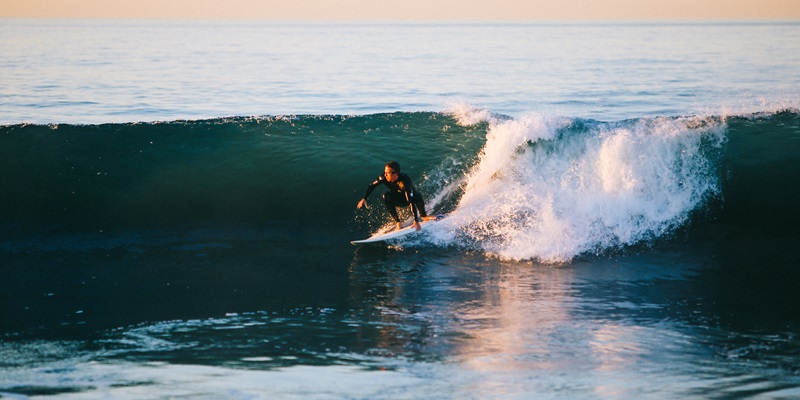Surfing has long been regarded as an exhilarating water sport that requires skill, precision, and a deep understanding of nature’s waves. However, with the advent of artificial intelligence (AI), surfers can now take their passion to new heights. By harnessing the power of AI, surfers can gain valuable insights into wave patterns, optimize their strategies, and ultimately enhance their overall surfing experience.
Analyzing and Predicting Wave Patterns
One of the key roles of AI in surfing is its ability to analyze and predict wave patterns. Traditionally, surfers relied on their intuition and experience to read the waves. However, AI changes the game by offering a scientific approach to wave analysis. By collecting and analyzing data from various sources such as buoys, satellites, and sensors, AI algorithms can identify patterns in wave formations, currents, and tides. This information enables surfers to make more informed decisions about when and where the best waves are likely to occur.
Collecting Data: Exploring Various Sources Used by AI Algorithms
To make accurate predictions, AI algorithms require vast amounts of data. Buoys equipped with sensors provide real-time information about wave height, period, direction, and other essential metrics. Satellites offer a global perspective, allowing AI algorithms to predict wave patterns across different surf spots and even entire coastlines. Furthermore, surfers can wear smart devices equipped with sensors that collect data on their movements, balance, and positioning on the board. This data is then fed into AI algorithms that can identify areas for improvement and suggest specific techniques or adjustments.
Optimizing Strategies: How AI Provides Real-Time Feedback and Analysis
AI excels at processing and analyzing vast amounts of data quickly. By leveraging AI technologies, surfers can receive real-time feedback and analysis on their performance. For instance, during a surf session, AI algorithms can track the surfer’s movements, evaluate their technique, and provide immediate insights and suggestions for improvement. This instant feedback allows surfers to adapt their strategies on the fly, optimizing their chances of catching the perfect wave.
Smart Devices and Sensors: Collecting Data on Movement and Balance
Surfers can enhance their training sessions by using smart devices equipped with sensors. These devices track movements, balance, and positioning on the board, providing valuable data points for AI algorithms to analyze. By reviewing this data, surfers can identify areas where they may lack technique or balance, enabling them to make specific adjustments to improve their performance. This technology offers surfers a unique opportunity to fine-tune their skills and achieve their full potential.
Utilizing Data: Identifying Areas for Improvement and Suggesting Techniques
Once the data is collected, AI algorithms can help surfers identify areas for improvement. By analyzing information from multiple surfers, AI algorithms can identify patterns and trends that can be used to develop effective training strategies. For example, if multiple surfers struggle with balance during turns, AI algorithms can suggest specific techniques to improve stability and enhance their performance. This data-driven approach allows surfers to continuously refine their skills and push the boundaries of what is possible on the waves.
Developing Training Strategies: Analyzing Patterns and Trends
With a vast database of surfers’ data at their disposal, AI algorithms can provide invaluable insights into training strategies. By analyzing the performance of top surfers and identifying common techniques and approaches, AI algorithms can help surfers tailor their training sessions to focus on areas that will have the greatest impact. Surf coaches can use these findings to design customized training programs, catering to individual strengths and weaknesses. This revolutionary approach to training can accelerate skill development and unlock new possibilities in surfing.
Advancements in Filming: AI-Powered Cameras and Drones Capturing High-Quality Footage
AI has not only transformed the way surfers train, but also how the sport is captured and enjoyed by enthusiasts. AI-powered cameras and drones have revolutionized surf cinematography, capturing high-quality footage from unique angles and perspectives that were previously inaccessible. These advanced camera systems can track surfers, anticipate their moves, and automatically adjust settings to capture breathtaking moments. This immersive footage provides viewers with an up-close and personal view, enhancing the thrill and excitement of the sport.
Real-Time Commentary and Insights: Enhancing the Viewing Experience
As AI algorithms analyze the captured footage, they can provide real-time commentary and insights for viewers. Surfing fans can watch a live stream or recorded surf session and receive detailed analysis on the technical aspects of each ride. AI algorithms can break down the mechanics of a maneuver, highlight critical aspects of a surfer’s performance, and offer suggestions for improvement. This interactive viewing experience enhances the appreciation and understanding of the sport, inspiring surf enthusiasts to deepen their connection with the surfing community.
As AI continues to evolve, it is clear that its impact on competitive surfing will only continue to grow. The ability to analyze and predict wave patterns, optimize strategies, and offer real-time insights has revolutionized the sport. Surfers now have access to new tools and technologies that enhance their training, equip them with valuable data, and push the boundaries of what is possible in the water. With AI-powered cameras and drones capturing awe-inspiring footage, the surfing experience has been transformed for both participants and fans alike. As the technology advances, the future of surfing looks incredibly exciting, promising deeper connections with the ocean and greater achievements on the waves.

